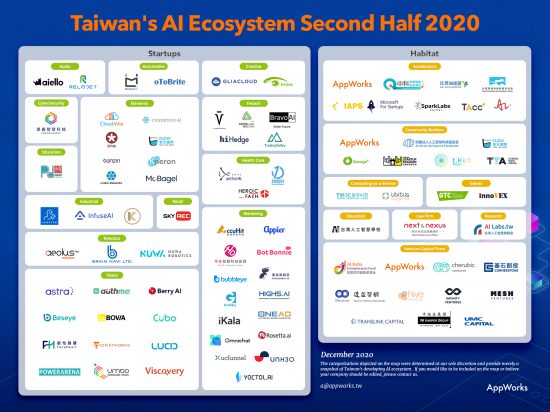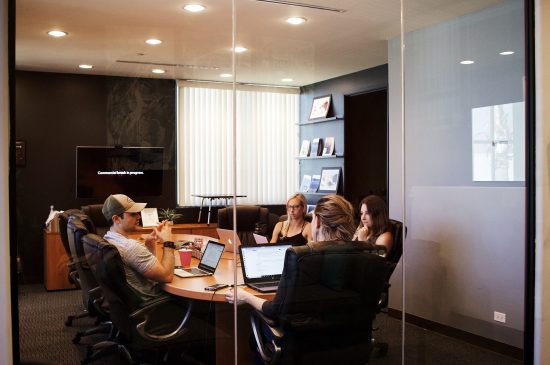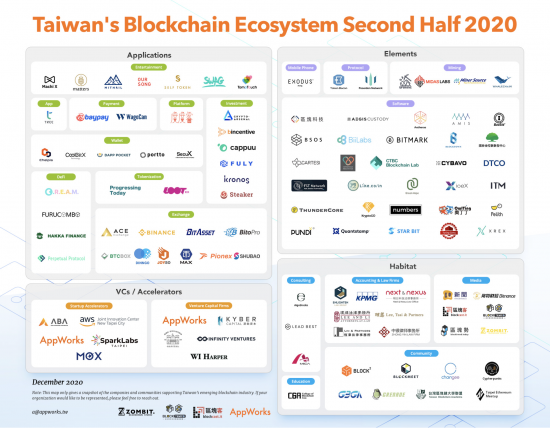
Jack An, Analyst (安良方 / 分析師)
Jack is an Analyst covering AppWorks Accelerator. Before joining the team, he was a co-founder and early team member at two InsurTech startups, where he developed a passion in user experience and product development. Previous to his startup journey he worked as a commercial property underwriter at Chubb Insurance in New Zealand. Jack graduated with a Bachelor of Music from Waikato University where he studied classical piano. He loves to cook, read and is a practicing stoic.
Hi, I’m Jack, I joined AppWorks as an Analyst in April 2019, not long after I burnt through two startups, one I co-founded in 2017 and the other as a founding team member. My experience taught me that building a successful company is extremely difficult, and if I wanted to improve my odds, I needed to learn from people who have successfully built them.
Now at AppWorks, I get to work alongside 1,300 founders of all stages amongst a variety of startups, 395 active ones to be exact, across the most exciting region that is Greater Southeast Asia, giving me truly a grand scope of founders to learn from.
This year, the coronavirus disrupted the normal world order, taking millions of lives in the process and slowing down economies all around the world. Amongst the chaos, startups from all stages were affected. Besides the select few that prevailed, most startups either saw stagnant growth, or worst, shut down their business.
On my journey to become a better founder myself, behind this very unfortunate event was a learning opportunity of a lifetime. This is why I set out to write this piece, to document my learnings and improve my understanding. I got to see just how startups that overcome the pandemic reacted differently to those that didn’t.
Amongst our network of founders, I had the chance to closely observe Ming Ming Chen, the founder and CEO of KKday – a travel platform that provides local experiences and tours across Asia. I got to witness first hand how he coped with drastic changes that affected his business, how he made quality decisions that pushed KKday to prevail, and how he quickly mobilized the entire company to effectively weather the storm.
I believe the key lessons distilled here are applicable to early-stage founders all the way up to founders heading into series B, especially for those that want to learn how to lead a team through uncertainties. The COVID-19 pandemic is a once-in-a-generation crisis, pushing founders to the test in every single aspect possible, so the lessons observed here should be great additions to your arsenal.
First, plan for the worst to conquer yourself
Back in January when the pandemic first broke out, I hopped on a call with Ming Ming to check in on KKday’s pulse. I remember distinctly that he was very calm and collected. It was hard to tell from his demeanor that 90% of travel in this region was wiped out almost over night.
I asked him what’s going through his head. Ming Ming mentioned that in his 20+ years of entrepreneurship, a key principle he practiced was to always plan for the worst.
By always planning for the worst, KKday has been extremely disciplined in managing their cash flow and balance sheet. The key principle is to not sink short-term assets into long-term investments, optimizing for cash flow flexibility in return.
This played a major role in neutralizing the initial shock of the outbreak, allowing KKday to protect their brand and refund customers fully, despite a significant drop in revenue.
The other benefit of planning for the worst is better managed expectations. When bad situations don’t turn out as bad as you had anticipated, then your own morale and energy are left unperturbed.
This side effect may seem negligible at first, but being the captain of the ship that’s lost at sea, the crew’s attitude is an extension of it’s captain. Displaying the slightest frustration and anger does not instill confidence in your team, but only serves to discourage them. What seemed like a minuscule change in perspective can actually impact the entire company.
By simply planning for the worst situation possible, Ming Ming and KKday were able to soften the initial blow of the pandemic. But as the travel industry came to a near freeze, how can a founder turn around their startup’s fate from barely managing survival to proactively creating opportunity?
A decision framework against uncertainty
Having led 2 companies to IPO before starting KKday, Ming Ming draws from a wealth of knowledge and experience to overcome the pandemic. He explains that the result of any decision is amplified during troubled times, either directly adding more uncertainty to your team or reducing it.
Furthermore, the result also impacts the decision maker’s future credits to lead their team. Thus, increasing the decision quality across the company was a key lever to pushing KKday forward.
Ming Ming distilled his decision framework into for steps ”見-識-謀-斷” which can be translated to “seek-digest-strategize-decide”. Every decision made within KKday goes through this rigorous process.
The first step is to “seek” information and data that’d accurately represent the reality of the decision. The second step is to “digest” the information and to understand the scope and the stakes. The third step is to “strategize”, plan and test the hypothesis of your decision; it is important to stress test your thesis and evaluate whether or not it adequately stands up to reality by inviting other stakeholders into the discussion to either validate or invalidate your understanding.
The last step is to “decide”. The founder or the leader of the team needs to make the decision alone, as they need to carry the responsibility of the result. They need to decide on the tradeoffs of making the decision, and whether or not to proceed or revisit the preceding steps.
Throughout 2020, KKday has transitioned from selling tours for foreigners traveling in a new country to weekend getaways and other domestic excursions for people living in Taiwan, while also branching into products that extend far beyond their typical offering including protective masks and packets of mala hot pot.
In the process of venturing into the unknown, Ming Ming and his team carefully used this framework to test their hypothesis, efficiently and effectively pushing forward their progress without losing precious resources and energy.
And as the year draws to a close, we are seeing all of these initiatives not only making up for the missing revenue, but also enabling KKday to strengthen its brand and build goodwill among its customer base, while acquiring a slew of new users in the process.
But making better decisions is only part of the equation, what truly pushed KKday above the line was their execution upon these decisions. So just how did KKday, a company with hundreds of employees, with operations spanning across 6 countries adapt to the new normal so swiftly?
Using organization structure to drive your strategy
Much like a sports team that changes their lineup according to their game plan and the opposing team, a founder needs to structure their organization and teams relative to the environment and strategy, to maximize the organization’s output.
Once Ming Ming and his team decided to introduce new products and focus on domestic travel, the way the organization was previously structured needed to be reshaped, as it no longer yielded optimal efficiency in promoting the new strategy.
Rather than having the Taiwan HQ team approve all products for travelers on their platform, KKday adapted to procuring products locally, authorizing local teams to source products for their own markets allowing them to move much faster than before.
The teams also overhauled their KPIs to focus on improving new product sales and domestic travel sales. These new KPIs became the guidelines and instructions that empowered the new teams to directly facilitate the change in strategy, enabling the company to quickly transition from serving outbound travelers to domestic travelers.
COVID-19 hit different countries with varying severity, creating non-linear recovery across all of KKday’s active markets. The organizational restructuring served as an effective way for local teams to rapidly respond to local conditions as needed, helping the travel company to pull off an incredibly successful year by all standard measures—no doubt exemplified by the US$ 75 million Series C they recently raised in the midst of a pandemic.
There is much more to learn
By always planning for the worst, Ming Ming was able to soften the initial impact for the pandemic, and by improving the decision quality across the board, KKday was able to create opportunities even when the odds were stacked against them. Most importantly, by efficiently managing the organization, KKday was able to execute quickly upon the opportunity they identified and improve their chance of survival at every corner and every turn.
These lessons observed here are not commonly found in public domains, and only really shared from one founder to another. As I tried to build my first startup at the age of 25, I mostly did it in isolation without knowing any other founders at all. Looking back, so many mistakes could have been avoided, and so much time could have been saved, if I had just learned from founders who were a few years more journeyed than me.
【So if you are like me, and you wish to become a better founder and build a successful company in the future, then I encourage you to join a community like AppWorks Accelerator, where you can interact with and learn from over 1,300 founders just like Ming Ming.】





